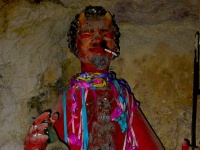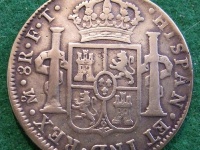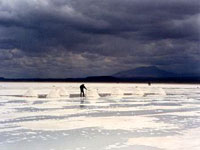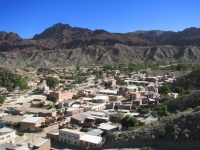
Entering the mines is like stepping back in time, given that current mining conditions remain untouched by modern advances. Indeed, they're much the same as when the Spanish used Andean peasants as slave labourers to extract the rich silver deposit. The experience involves guided tours leading groups along the narrow tunnels and up rickety ladders, stopping along the way to chat to working miners. Visitors won't struggle to find a tour operator offering trips out of Potosi, and the best guides tend to be former miners. Travellers should also consider that these trips, though fascinating, are potentially dangerous. For ethical reasons, tourists should perhaps remember that many people in contemporary Bolivia have no choice but to accept this hazardous life.

Spanish colonists used the Casa de la Moneda as their Royal Mint House, where they turned the silver they mined into coins destined for Spain. The institution is one of Bolivia's best museums, and covers the history of silver production in the country. Visitors will encounter coins and coin stamps, and assemblies of mule-driven wooden cogs that would beat silver into the right width for coining. They will also see a fascinating collection of religious paintings from the Potosi school (Baroque artwork).
Address : Ayacucho S/N, Villa Imperial de Potosí, Bolivia
Website : www.casanacionaldemoneda.org.bo
Telephone : +591 2 6222777
Opening times : 9am-12pm; 2.30pm-6.30pm - Tuesday to Sunday(closed on Mondays).

Salar de Uyuni is the world's largest salt flat, which exists courtesy of a prehistoric lake that went dry. This region is one of Bolivia's most spectacular natural attractions, and is a photographer's delight. Its surreal landscape combines salt pans, wandering llamas and wind-eroded rock formations. A landmass covered in towering cacti called, Isla de Pescadores (the Pescadores Islands), lies in the middle. Laguna Colorada and Laguna Verde are other isolated marvels in Salar de Uyuni. One is a fiery-red lake; the other is a deep blue. Both are inhabited by flamingos and surrounded by extinct volcanoes. Nearby Sol de Manana reeks of sulphurous gases from geysers, fumaroles and bubbling mud-pools. The village of Uyuni is located to the southeast of the Salar, and is the best base from which to explore the area. Travellers can arrange tours from there. 'Salt Hotels' around the periphery of Salar are a unique form of accommodation, where everything (walls, furniture, etc.) is made from salt blocks cut from the flats.

Located in Potosi Department, Tupiza mining town serves as a popular base for tours of nearby San Vicente, which is the region's major drawcard. San Vicente's 'Wild West' history features Butch Cassidy and the Sundance Kid: two of the world's most famous outlaws. Both of them died in Tupiza after fleeing the US in 1901. They were gunned down by the Bolivian army. Organised tours from Tupiza lead tourists along the 'death trail' of Butch and Sundance, giving visitors the chance to follow the outlaws' last days. The trail leads all the way to their supposed final resting place.

Travel Guide powered by Word Travels, copyright © 2023 Globe Media Ltd. By its very nature information in this travel guide is subject to change at short notice and travellers are urged to verify information on which they're relying with the relevant authorities. Neither Globe Media Ltd nor Travel Vogue can accept any responsibility for any loss or inconvenience to any person as a result of information contained above.